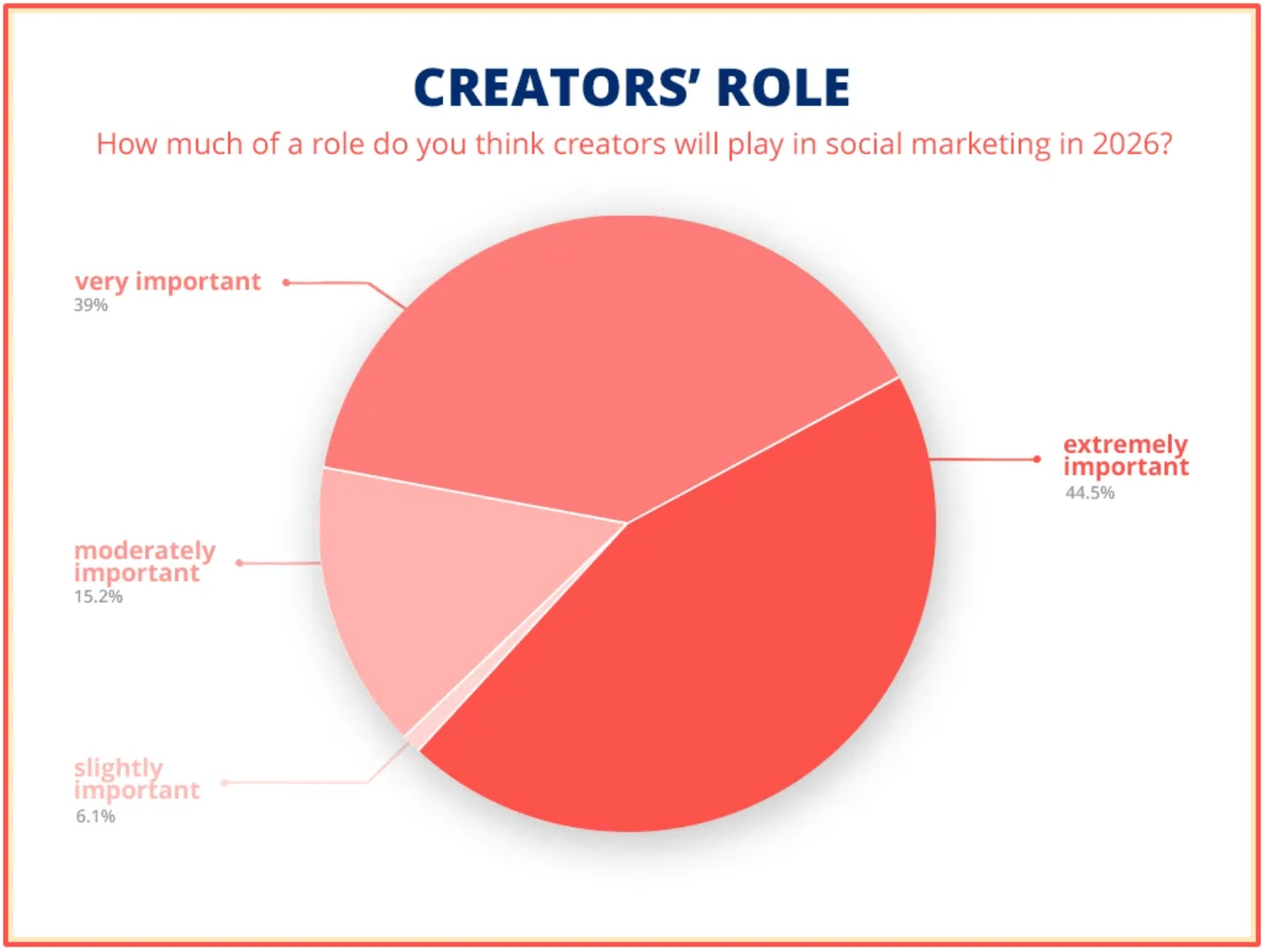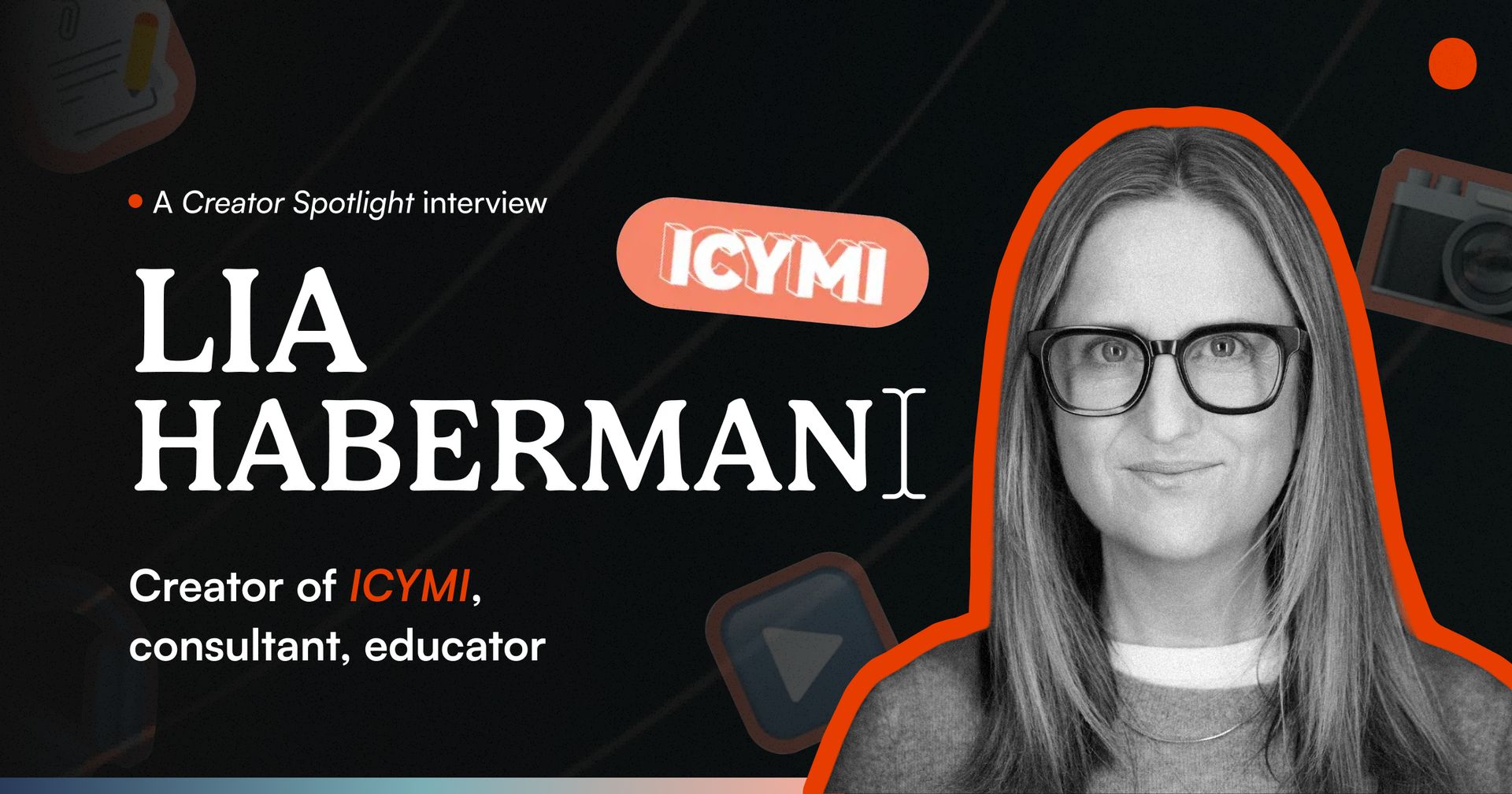Lia Haberman is a platform whisperer. Her newsletter, ICYMI, is a must-read if you want to keep track of creator marketing news, brand social plays, and weekly social media platform updates worth paying attention to.
In this issue:
📉 Why most creators hit their ceiling in three years
🔍 How to tell when social platform updates are worth your time
🔮 Lia’s creator economy predictions for 2026
— Natalia Pérez-González, Assistant Editor

00:00 Introducing Lia Haberman
01:20 The 3-year shelf life of a creator
08:45 Knowing which platforms to invest in
16:21 7 signs of a good platform feature
25:52 The most valuable platforms for creators
34:35 Defining the 7 formats of content
39:24 Why are marketers spending on Instagram?
41:25 Keeping content free vs paid
47:03 Social media trends of 2025
54:27 How to grow online in 2026
🎧 If you prefer a podcast platform other than YouTube, we’re on Apple, Spotify, and all the rest.
Easy setup. Easy money.
Making money from your content shouldn’t be complicated. With Google AdSense, it isn’t.
Automatic ad placement and optimization ensure the highest-paying, most relevant ads appear on your site. And it literally takes just seconds to set up.
That’s why WikiHow, the world’s most popular how-to site, keeps it simple with Google AdSense: “All you do is drop a little code on your website and Google AdSense immediately starts working.”
The TL;DR? You focus on creating. Google AdSense handles the rest.
Start earning the easy way with AdSense.
This is an advertisement.

The truth about creator longevity
“It’s very hard to be the most popular, engaging, fascinating person that brands want to partner with consistently.”
Creators move fast. Most brands don’t. They’re learning to because they have to; we’ve all seen a brand hop on a trend about five cycles too late. Social media waits for no one.
Every creator has a shelf life. Lia Haberman says it’s about three years (if you’re lucky). This is part of why brands have had to sped up; collaborations with creators in the middle of their moment cannot get stuck in an onion of approvals.
In Lia’s seven years studying the creator economy, she’s watched wave after wave of creators disappear from the spotlight. The timeline typically runs three to four years before one of two things happens:
The technology changes (remember Vine?)
Audience attention shifts to fresher faces
As a UCLA lecturer, consultant, and author of the ICYMI newsletter, Lia offers insight into the creator economy from a tenured vantage point. She's trained on both sides of the table, teaching creators how to monetize and teaching marketers how to work with them. Every week, 47,000 subscribers turn to her sharp analysis on platforms, creators, and the collision between the two.
"Agents and talent managers are always saying ‘build your own business on the side, do the brand partnerships,’ but at a certain point you're going to eclipse brand partnerships. You'll either get too big for them or they're going to want to partner with somebody younger, somebody newer, somebody on a different platform."
As always, there are some exceptions to the rule. Emma Chamberlain launched a coffee company; MrBeast built a content studio; Caspar Lee, former Spotlight guest, founded four businesses while still actively creating. Marques Brownlee found a loophole: he covers technology, so his content stays as current as the tech itself. "The things he's talking about evolve and stay current and timely," Lia said.
She’s observed that most creators don’t have a conscious exit strategy. "A lot of times it's just presented to them, and they take it," she said. A brand partnership turns into a business opportunity. A side project gains traction. The creator becomes a founder without planning to.

In a survey Lia conducted of the ICYMI audience’s 2026 platform predictions, the majority of respondents said they believe creators will play an extremely important role in social marketing.
A shift from creators to marketers
This pattern has completely transformed who shows up to Lia's UCLA classes.
In 2020-2023, her courses were packed with creators, some with millions of followers, trying to figure out how to monetize.
"Maybe they had a million or two million subscribers or followers, but they were like, how do I turn this into a business? How do I pitch myself to brands?"
Now, it's virtually all marketers, she told us. "People who work at brands, in communications, in PR."
The creators who were building audiences have either successfully monetized or moved on. This cohort of marketers needs to understand how to work with whoever comes next. Same curriculum, completely different audience.
After their time in the spotlight ends, savvy, strategic creators can become great marketers, taking on fractional work at brands and agencies. The ability to capture an audience’s attention will always be in style.

Making money should always be this easy.
Google AdSense takes the stress out of monetization. Just drop in one line of code and let their automatic ad placement tech do the work. You’ll get the most relevant, high-paying ads, without any of the hassle. Start earning with AdSense today.
This is an advertisement.

Lia’s 7-step guide for what to watch in platform updates
At the time of our interview, Instagram had announced 19 different features the week prior. TikTok had rolled out three more. YouTube tweaked its algorithm again. Lia's seven-step framework tells you what’s worth paying attention to and what’s just noise:
The CEO talks about it
The platform puts it in writing with a blog post
Tools are built to support it
Improvements roll out
The platform announces successful usage numbers
The data is reinforced by other independent sources
Brands, creators and app users start talking about it
Jump in too early and you waste time testing temporary features the platform kills in a couple of weeks. Wait too long and you've missed the algorithmic boost platforms give to early adopters. Here's how to read the signals.
Step 1-2: The CEO talks about it, a blog post goes live
Track what the CEOs mention. When Mark Zuckerberg mentions something, it's a company-wide Meta priority. When Adam Mosseri posts about it, it's Instagram-specific. The blog post confirms they're committing resources, not just testing ideas — the company is willing to stake web real estate on the feature.
If a CEO announces something but there’s no blog roll-out, keep an eye out, but nothing more.
"For the longest time, Threads had no blog post, no anchor content about it. It felt very much like, you're not even committing to web space for this.”
She was right to be skeptical — Threads languished for months before Meta got serious.
Compare that to YouTube — when CEO Neil Mohan started talking about living room viewing in 2022-2023, blog posts followed, and improvements and tools rolled out. Now, Nielsen confirms they're the number one streaming platform by watch time for 14+ consecutive months.
Step 3: Tools are built to support it
This is the key stage to look for. You've now confirmed the platform is serious, but adoption is still low enough that you'll catch the algorithmic boost for early usage.
"That's a particular type of brand that's an early mover, an early adopter — and not everybody's like that."
If you're a creator optimizing for growth, this is your entry point. Start experimenting, document what works, and build a proof of concept before the masses arrive.
Steps 4-5: Improvements roll out, usage numbers announced
By this point, the platform is iterating based on feedback and publicly sharing traction. For most creators and brands, this is where you should seriously commit resources.
The usage numbers tell you everything, but it’s essential to read between them. "The numbers have to be the right audience," Lia told us. "If Gen Z is the fastest growing demographic or very much taken with a platform or a feature, that is gonna get announced because that is the audience that everyone is going after now."
Instagram Notes is the perfect example. "No grown-up I know uses Notes,” Lia said. “But it over-indexes with teens." So Instagram keeps rolling out new note options — video notes, music notes, text notes — because the demographic data tells them to.
This is where mid-size creators and brands should start testing. The early mover advantage is gone, but there's still runway before over-saturation.
Steps 6-7: Independent verification, fanfare
By the time Nielsen confirms YouTube's streaming dominance and brands mention it in strategy decks, you're too late for the early-mover advantage. The novelty has worn off, and the algorithmic boost is gone.
However, this is exactly when risk-averse brands should enter; YouTube Shorts is a prime example. When independent data confirmed it was hitting 70 billion daily views and creators began raising them in strategy conversations, the early opportunity had passed. But this is exactly when risk-averse brands finally felt comfortable investing.
"Not everybody's an early mover. Depending on what kind of creator or brand you are, you kind of step in at different times."
If you're a Fortune 500 brand that can't afford to look foolish, wait until here. If you're a scrappy creator trying to grow, you've missed the moment.





